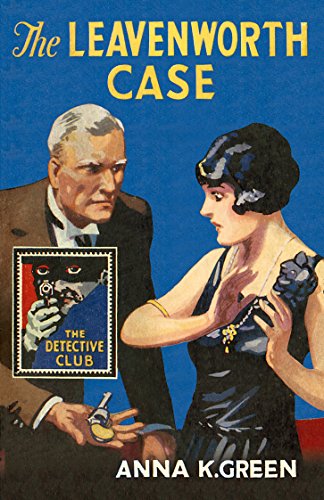Book Review: The Leavenworth Case by Anna K. Green
Everett Raymond is alone in his law office because the senior partners are elsewhere when a man comes in and tells him that their client, wealthy importer Horatio Leavenworth, is dead. Murdered! In the absence of Mr. Leavenworth’s usual attorney, Mr. Veeley, Mr. Raymond is deputed to represent the interests of the family and estate. The young lawyer soon finds his favorite police detective, Ebenezer Gryce, is already on the scene. Then he meets Mr. Leavenworth’s two wards, the beautiful cousins Mary and Eleanore, one fair and one dark. He falls in love and becomes entangled with the case.

This 1878 book is considered by most authorities to be the first detective novel written by a woman. Wildly popular and influential in its time, this and subsequent novels by Anna Katharine Green won her the sobriquet “Mother of Detective Fiction.” The daughter of an attorney, Ms. Green was meticulous in her portrayal of legal matters.
Much of the first part of the book is taken up with the depiction of an inquest, which was praised for its verisimilitude. But it’s still made interesting by moments such as a witness suddenly mentioning a person in passing–turns out one of the servants of the Leavenworth household is missing, and no one bothered to mention it before because the coroner hadn’t asked. (And later, we find out the same witness could place a suspect at the scene of the crime, but only by inference, and since he hadn’t been specifically asked about that….)
Mr. Veeley being unavailable for several weeks means that Mr. Reynolds has to discover most of the backstory himself, the older lawyer only coming in late to deliver some deeper detail. Likewise, Detective Gryce is laid up for some time with an arthritic attack and must rely on Mr. Reynolds for an out of town bit of legwork.
There’s some period ethnic prejudice, though despite Mr. Leavenworth being fond enough of the Chinese people to write a book on their customs, no actual Chinese people appear. Instead, his irrational hatred of the English is a key plot point.
More disturbing to some readers will be discussion of underage marriage. It’s pointed out that in New York of that time, the legal age for marriage without parental consent was fourteen. And part of the backstory is the important lesson, “if you are sixteen and a man you’ve never seen before starts hitting on you at your father’s funeral, do not marry him as he probably does not have your best interests at heart.” (Trigger warning: abuse.) A current-day relationship at least has the woman at twenty, but there’s a twenty-plus year age gap between her and her romantic interest.
The mystery is engaging, though younger readers may find some of the social mores and technological restrictions of the 1870s baffling. The ending may seem a bit much as it is not just about solving the murder, but restoring morality. Up to the last couple of chapters, the dialogue feels natural, but once all the secrets come out, it turns ludicrously melodramatic.
It’s fascinating, seeing bits and pieces that later became mystery cliches presented fresh and sharp. Recommended to mystery fans, especially those who want to see how women contributed to the genre’s early development. It’s readily available on public domain sites.

